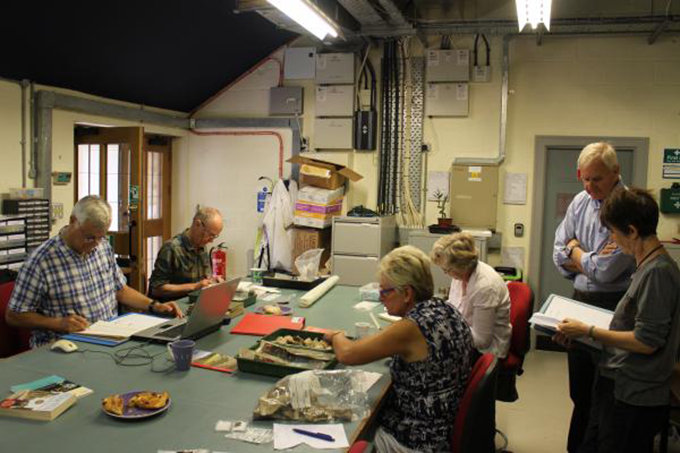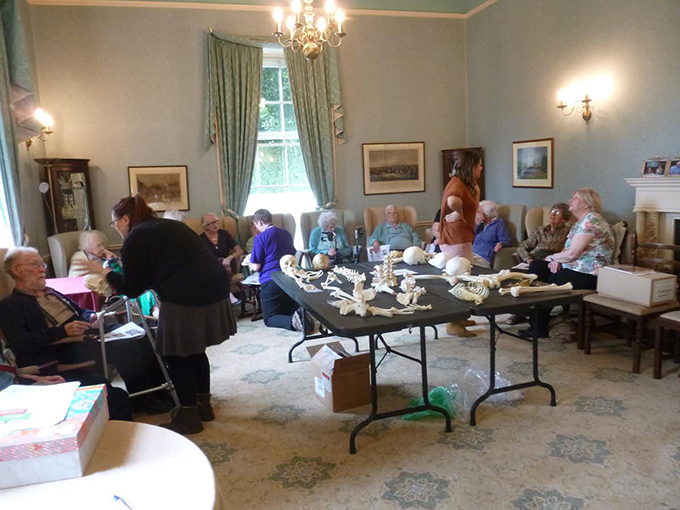
As health care improves and more people live healthier and longer lives, the elderly population of Earth will balloon. There were 66m people in the UK in mid-2017, and nearly 12m – or 18.2% – of them were aged 65 years and over. By 2040, that number is expected to rise to 24.2%.
Many of these people will spend their last years in care homes. In 2017, there were an estimated 11,300 care home spaces for older people in the UK, but an extra 71,000 spaces may be needed by 2025.
Our ageing population is straining the care profession. In care homes, it’s challenging staff to ensure a good quality of life for people in old age, although there are various “toolkits” to guide carers in providing meaningful and stimulating activities.
With restrictions on staff time and resources, it may only be possible for carers to engage residents with a minimum of physical and mental activities beyond basic care, despite their importance for our well-being.
One way to enrich the lives of people in care homes is to promote life long learning – education from “cradle to grave”. Learning isn’t the preserve of young people – giving older people in care homes a chance to learn new things can help them live more fulfilling lives.
I know this from nursing, my first profession. Before I became a professor of archaeology, I was taught in the 1970s that caring for people was not all about drugs and drips. Holding a patient’s hand and having meaningful conversations with them is just as much a part of the healing process as the operation they’ve just had.
Likewise, care homes should ideally provide people with more than the basics of care. Nursing set me up for understanding life (and death), but then I turned to a different type of caring as an academic. Nurturing students through their education has been a major part of my life, but my research has helped me use my background in nursing, and archaeology, to engage the public in promoting the value of education at all stages of life.
Archaeology for the elderly
The idea to introduce archaeology into the caring profession started when my mum spent the last two months of her life in a care home. I wondered about the value of introducing archaeology into that setting, believing that older people tend to have an inherent interest in the past.
Following my mum’s death, along with my colleague Kirsty McCarrison from Durham Museums and with funding from Durham University, we did a pilot study: “Bringing archaeology to the older generation”. We’d already done similar work to engage schoolchildren with archaeology, and wanted to see if the same could be achieved in care homes with older people.
We spent six weeks talking to residents and some of their carers about the value of archaeology for understanding the past, how archaeologists work and some particular specialisms. These included the study of plants, animal bones, pottery and human bones. We also took them to see an archaeological excavation and two museums. They got the chance to get hands-on experience – washing animal bones and pottery and handling archaeological finds.

Group learning activities stimulate older people and help them build meaningful connections to the people around them. Charlotte Roberts, Author provided
They really loved the part on human remains – when it came to discussing diseases seen in bones they talked openly about their own ailments and those of their relatives. The ages of residents involved reached 102 years, and included people with deafness, short-term memory challenges and problems with sight and mobility.
By focusing on human remains and disease in the archaeological record, residents discovered evidence for ailments that are still familiar to older people today, such as osteoporosis, osteoarthritis and vitamin D deficiency. They were fascinated to know how people lived in the past and what health problems they encountered, often comforted to know that the diseases associated with old age they face today are not new.
If given the opportunity, people can continue to learn throughout life. As one resident said, “You never stop learning”. We have a crisis in ensuring effective and empathetic care of the increasingly older part of our society, and this work in some small part shows how we can be more ambitious in providing engaging opportunities for people in care homes.
Author Bio: Charlotte Roberts is Professor of Archaeology at Durham University
